It was a late and very balmy fall so far, especially for the Idaho mountains in mid-December, but the weather forecasters began to speak about payback time. They talked about an Arctic air mass bearing down on us like a freight train from the polar regions. The rail cars were carrying a payload of glacial ice.
Usually I pay little mind to such talk (if I even happen to stumble upon it), but I was actually paying attention this fall because our entire cow herd was still many miles away on the the high desert ranges. A freak snowstorm could entrap them up there leaving us with few options to get them out before the full ferocity of winter set in.
A neighbor told me of a time he remembered when cattle were stranded far in isolated valleys in Colorado by an early fall storm. They actually flew in hay bales, barely keeping them alive until they could dig them out.
Inconceivable.
We had them up there extra long because there was plenty of grazing left, and hay prices had more than doubled. Feeding that much hay early could take away any profit margins we hoped for this season. We weaned the calves off long ago, and had been checking on them several times a week, bringing them mineral, checking on grass but that was still some 20 miles away from the home range and across the Salmon River. Sure, there was a bridge, but after the bridge the 10 foot wide road that led into our 70 square mile range country was perched high above the river and cut into the sheer cliffs that formed the bottom of our desert range. The problem was that road in the winter. It was hazardous to say the least. And it was the only way out.
Several times, we almost lost cattle off the precipice, but the girls (my horseback range riding crew) had learned how to hold back and talk to the herd pups so there was no pressure so the cows could pick their way.
Ice on the road was now my concern. Not only would we not be able to go up there, but we wouldn’t be able to trail cattle down.
We sharp shoed our horses to prepare for the inevitable ice. That involved pulling the old shoes off and welding hardfaced dots at four points on the flat shoe, and nailing the new sharp shoes on our steeds. I picked out 5 horses from our remuda, and prepared them for frozen creeks and hillsides.
It was 3 days before the front was to hit. We caught horses at first light, and saddled by the lights of the barn and tack room. Today was clear and crisp. There was 4 of us horseback today, and the daylight hours were short—what gathering of the herd needed to be done had to be done quick.
While tacking up, I spoke to the crew about how dangerous riding could be at this time of year. In spite of the sharp shoes, horses could slip—they could be hurt and the rider could be as well. In the cold and short daylight (it was getting close to zero at night), a poor decision could easily mean hypothermia and death. I handed out lighters to each, so they could at least start a warming fire with the abundant dry fuel found in the desert brush in spite of a broken leg or arm.
We loaded the horses, ourselves, and the dogs and we were off.
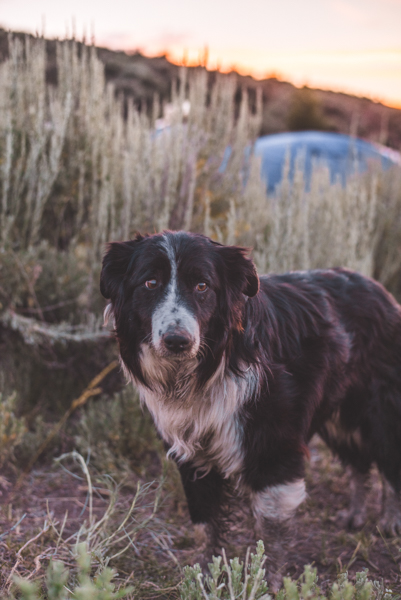
Eyeing the hills as we crested the first pass after driving for nearly three quarters an hour, we still spotted none of the cows. They weren’t up high anymore—2 days riding early this fall gathered them. Besides, the wolves had moved in to the high timber, and it was time to move the herd out of their territory.
So they had to be in the lower hills we call the desert range. Hills we call them, but they are steep broken mountains with as much as 3000 vertical feet between canyon creek bottom and rim. The cows could be anywhere on that topography, as there was a little snow everywhere, and they didn’t come down to drink but once every 4 days or so.
We arrived at Hat Creek pass and pulled the gooseneck over. Hat Creek Pass forms a narrow divide between main Hat Creek and where our other deeded ground is in Little Hat Creek. The road was good so far, and it was time for some of us to ride. We let Josiah and Jess out first. I made it clear that they had to be preferably in eye contact with each other at this time of year. At minimum they had to have clearly established meeting points so their partner could find them if they had a wreck. Eye contact could be as much as 10 or 20 miles on ridge tops. Cell phones don’t work except on the high ridges. Radios are useless in the broken canyons. The only way to ensure safety of your partner is by eye or careful planning.
They set out with their dog. They are riding the high ridge that forms the buttress of Taylor Butte, some 8000 feet in elevation and a 10 mile ride up. From there they can look in many of the canyons on the way.
My 14 year old daughter, Mel, and I drive the gooseneck back to Little Hat. Our ride will go up through the convoluted canyon on the south side of the range. We had spotted some tracks on the drive up.
We parked the truck and unloaded the horses. Mel was riding Puma, a classic bay quarter horse gelding (a little hyper, especially when cutting or roping). I was riding Ginger, a 5 year old tall buckskin mare I bought green broke from a neighbor.
We had the border collies. Josiah likes his Kelpie, and the Kelpie doesn’t see eye to eye with the border pups. Their whole herding psychology differs, so we try to keep them apart.
Arrow was the top dog, but very old. I hesitated taking her because of her age but she forced her way in and stowawayed aboard that morning. She didn’t herd aggressively like the young dogs did, but really enjoyed just trailing along keeping the herd bunched by her experienced eye.
We rode a good piece of the morning up Larkspur Canyon following cow sign. Most of the tracks looked several days old. They didn’t really head anywhere, but it looked like some 20 or 30 head had spent time in this canyon. The main water source was a couple of miles up the canyon—I hope to find fresh sign or even cows there, but was disappointed to find nothing. Just more old tracks.
We decided to break out of the canyon to a high ridge where we could look over the other side. We could see Josiah and Jess up on the far Taylor ridge, a deep gulf of canyon between us. The wind was right, and we could actually hear them talking, though they couldn’t hear or see us.
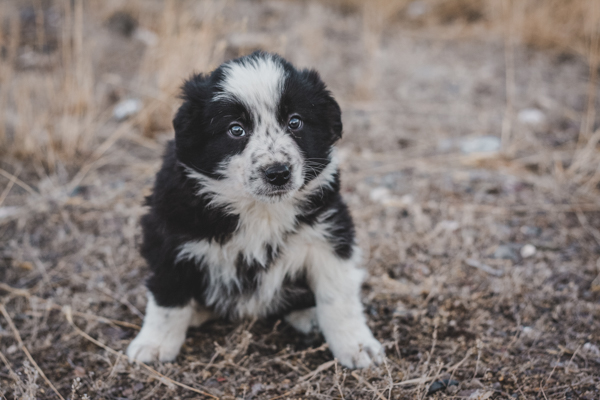 It was about then how that I realized how fat Arrow was. I hadn’t seen the dog for about a week or two (kids chore the dogs), and didn’t notice her in the truck, but from the back of my horse, she looked like she had about swallowed a basketball.
It was about then how that I realized how fat Arrow was. I hadn’t seen the dog for about a week or two (kids chore the dogs), and didn’t notice her in the truck, but from the back of my horse, she looked like she had about swallowed a basketball.
I said to Mel that that dog is either obese, full of cancer (had a dog die that way once), or pregnant (a miracle for a hound that old). After riding for another mile or two, we got off, snacked, stretched our legs and let our horses grab a bite.
Mel stooped down to Arrow while I took a look around.
‘”She’s pregnant, Dad, and she is about to pup!”
“How do you know?”
“I milked her!” Mel exclaimed.
I went over and checked her out. Sure enough, this dog was about to pup.
“We have to get her back to the truck ‘fore she does”¦” I said.
So we rode out the quickest but most miserable way out. North Fork of Park Creek. An extremely rocky canyon with steep walls that could be real dangerous if the dirt on the way down is frozen. Even the sharp shoes will slip occasionally on ice or hard frozen dirt.
We knew that is was also one of our last hopes for finding cows. I hoped Josiah and Jess ran into most of the herd, because we hadn’t seen anything yet. We were about a mile above the forested canyon floor, so we couldn’t see if there were cows down there from above.
Arrow started scratching the ground.
Nesting.
We moved out. Quickly.
We couldn’t see a real easy way down. We knew there were game and cow trails down, but since I hadn’t been on this side of the canyon before, I didn’t know where to go. I had trailed cattle several times up and down the canyon bottom, and knew how to move there, but never on this side.
Just then a herd of elk sprinted over the ridge in front of us. There was about 10 head, clearly headed the same way we were. They filed out onto a trail that we could have never seen, and picked their way down to the canyon bottom.
Apparently they had ridden this side of the canyon before”¦
We high tailed it down the trail, Mel in the lead, and me in the rear. Piece of cake, and ground not frozen”¦I breathed a sigh of relief.
Soon enough, we reached the bottom timber.
Arrow still with us.
Panting hard.
The canyon bottom was not as bad as I thought it would be. The ground on the south facing slopes had the sun to keep it from freezing, and that’s where the trail was. We picked our way.
So did Arrow.
We rode out the canyon until it became impassable with rockfall and deadfall. There was one trail out of this place up the huge 3000′ sidehill (read wall) that bounded the creek on the left. It was no wonder that those bootleggers kept a still down the creek in that jumbled mess back during prohibition (’tis true, the old boys say, but I’ve never found it—neither did the agents, I’m sure, as it was some 17 miles off the road by horseback). 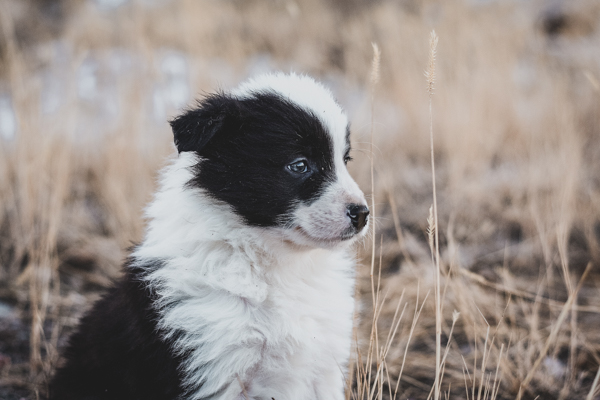
We picked our way up the trail, off and on horseback (the trail sometimes narrowed to less than a foot wide—one misstep would mean the end on such a side hill (cliff) as this, for both horse and rider.
I remember several years ago when that nearly happened to both Ginger, my mare and me. She mis-stepped and rolled some 25 times until some big fir trees finally stopped her. She was very busted up and bloody and after a year of miracles, I was riding her again. I came off, right away, thankfully.
Arrow still kept on, but the hill was tough on her.
We crested the ridge and found them. All 90+ head were in the next creek below us. I knew that Mel and I would have an easy time now.
We rode back to the truck first to get Arrow a rest. I loaded her in the back seat, where she immediately began to scatch the cushion for a nest.
“She might have them right there.” I told Mel.
“Better than out in the the snow and brush.” she said.

We finished the gather just as it was getting dark. Jess and Josiah came in with a few cows of their own, but we had stumbled on to the mother lode of ’em. We were pretty clean, I believed, with what was not eaten by wolves.
It was getting cold.
When we got back to the ranch, we made a wonderful straw nest for Arrow in the back corner of the barn by the tack room. She burrowed under, as if she knew exactly what she was doing. And she did. Cause Mel and some sisters ran out in the cold night to find 2 sausage like pups latched on to her, nestled deep in the straw, all licked off and dry, even though it was 5 degrees below zero by morning.
There were five sausages by morning. All warm and burrowed and sucking on their really old Arrow-Mom.
They all graduated to my bathroom by nightfall. Why is it that Dad’s bathroom always sees the goats, cats, calves and dogs?
Might give a guy a complex about how he smells.

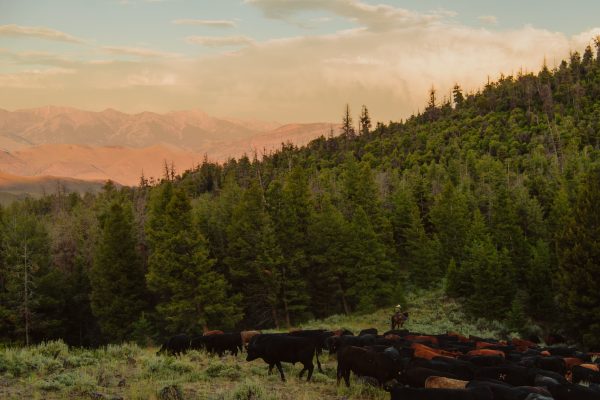
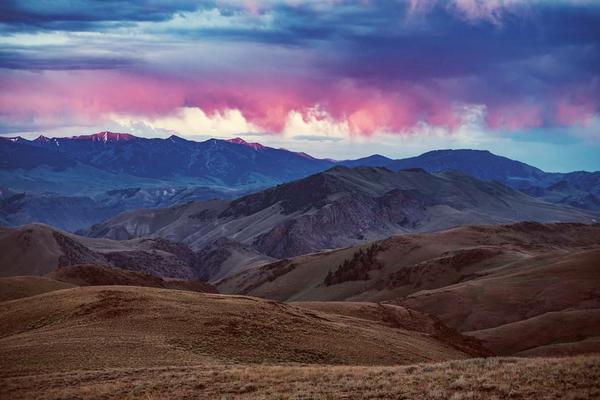


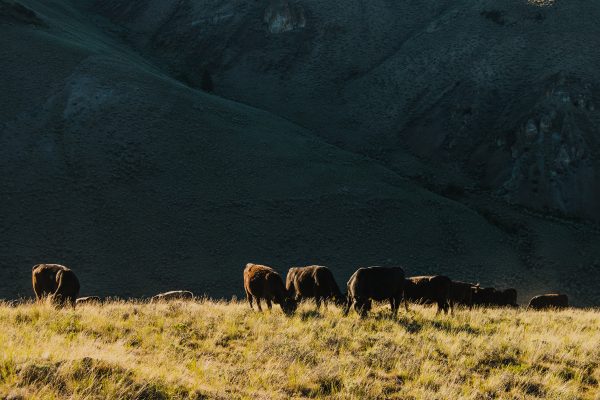
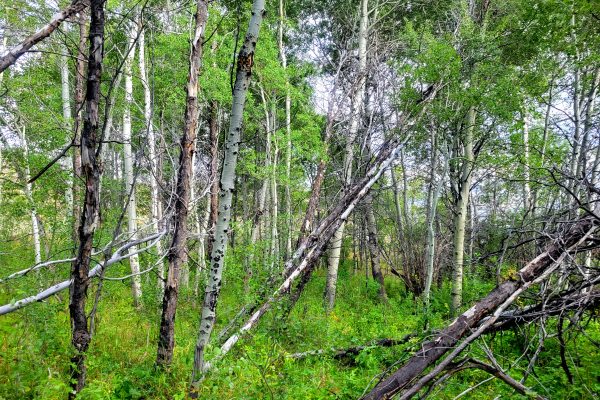
Gina
I know the time was tough, but you are very blessed to live where and how you do.